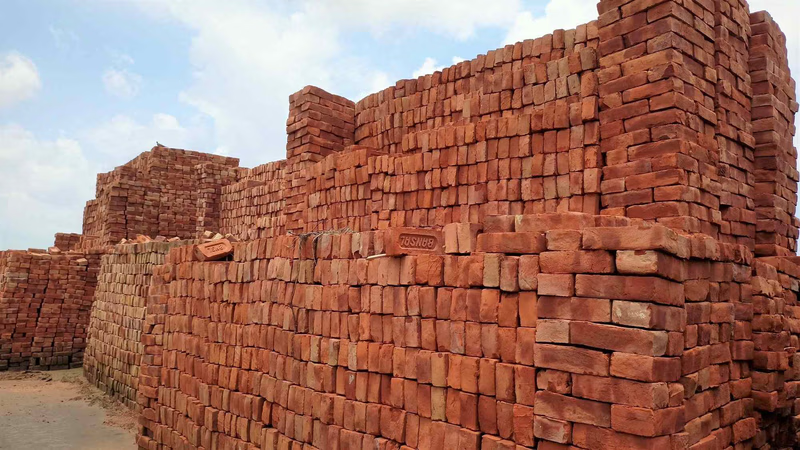
Brick production process showcasing clay and drying techniques.
The type of soil and its impurities have a great impact on the price of clay bricks. Also, in the final stages of baking, if the brick is not at the right temperature, it can cause many diseases. Steps are required to make bricks, which are:
- Digging and extracting raw materials
- Preparation of raw materials
- Molding
- Drying
- Brick baking
There is a main method for making bricks, which is:
- Dough wire cutting method
- Hard dough method
- Semi-dry method or dry press
After drying, the clays are arranged in the kiln. The arrangement of clays should be in such a way that hot gases and flames can easily pass through them. Brickmaking means heating bricks in such a way that the crystallization water of the clay jumps and the grains of the soil stick together well and create a hard body. The stages of brick production are:
- Extraction of raw materials: clay is collected by loaders and transported to the factory by truck. Then the surface soil is removed and the roots of the plants are separated from the soil so as not to cause the bricks to become porous.
- Preparation of raw materials: Here, large pieces of stone are separated and sent to the stone crusher, and then the soil is rounded. Next, depending on the color of the brick, the amount of iron oxide is added and reduced so that it becomes the desired color during baking.
- Making mud for production: Water is added to the created dust so that it becomes sticky and shapeable. The more continuous the soil grains, the optimal amount of water and the forming with more pressure, the brick will have high resistance.
- Molding or plastering: Molding is done in two ways, traditional and machine. In the traditional method, where all the steps are done by hand, the flower is poured into a wooden mold that has no bottom and smoothed by hand. Then they remove the clay mold and place it in the open air to dry, which is a time-consuming and costly process. But in the machine method, the clay mold is placed in the oven or dryer.
- Clay drying: Since there is a lot of water in the clay, it is first dried at a lower temperature than the firing. In order to prevent cracking and rapid shrinkage, the clay should be dried slowly in the oven. In the traditional method, clays are placed next to each other to dry in the sun, which takes between 3 and 15 days, but in the kiln, it takes between 24 and 48 hours.
- Baking the clays: After drying, the bricks are brought into the big kilns by carts, which are baked at a temperature of approximately 900 degrees Celsius between 40 and 150 hours, depending on the kiln and the soil, and exit from the other kilns. do At this stage, you can create different colors for the bricks by adding fuel at a certain time.
The method of making glazed bricks is not particularly different from ordinary bricks; In the glazed brick, only a surface of the glaze is covered on it. This glaze is made from clay and then it is combined with aluminum oxide to maintain its glassy and polished surface. To glaze the bricks, we must first allow them to dry completely. After drying, the prepared glaze is spread on the surface of the brick and dissolves. After the glaze reaches a certain temperature, it will penetrate into the brick and finally we will have a glazed brick.
-

Bricks are rectangular blocks used in construction, made primarily from clay or shale. They are known for their durability, thermal insulation, and fire resistance. Various types of bricks exist, including clay, concrete, and fire bricks, each suited for different applications. The brick production process involves mining raw materials, molding them into shape, drying, and firing in kilns to achieve hardness. Despite the rise of alternative materials like concrete blocks and steel frames, bricks remain popular due to their cost-effectiveness and aesthetic appeal. They are widely used in residential and commercial construction for walls, pavements, and decorative elements. Bricks offer advantages such as long lifespan and minimal maintenance but can be heavy and labor-intensive to install. Their versatility allows for various architectural styles while providing good acoustic insulation.
The standard size of a brick varies globally but typically measures around 9 inches long by 4. 5 inches wide by 3 inches thick. Overall, bricks continue to be a fundamental building material with a rich history in construction.
-
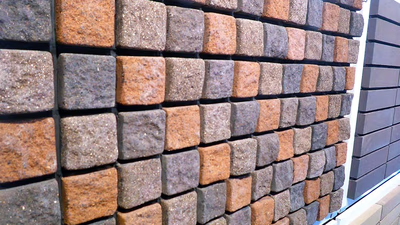
Clay bricks dominate the market due to their versatility and various manufacturing processes. They can be categorized into several types, including dry-pressed, extruded, wire-cut, concrete, sand-lime, perforated, and special-shaped bricks. Each type has unique properties suited for different applications. For instance, dry-pressed bricks offer a smooth texture while extruded bricks are lightweight with improved insulation. Concrete bricks provide higher strength for structural uses, whereas sand-lime bricks excel in moisture resistance. Perforated bricks enhance ventilation and are ideal for damp areas. Special-shaped bricks cater to specific architectural needs. Additionally, bricks can be classified based on quality (first, second, third grade), production methods (extruded, pressed, handmade), materials (clay, shale, concrete), usage (built-in or exposed), application (ordinary or engineering), and appearance (hollow or beveled).
Engineering bricks are particularly strong and suitable for demanding environments like basements and manholes. Fireproof or refractory bricks withstand high temperatures and are essential in fireplaces and kilns. The diversity in brick types allows for a wide range of design possibilities in construction.
-

The production of bricks involves several critical steps that influence their quality and price. The process begins with the extraction of raw materials, primarily clay, which is then prepared by removing impurities and adding iron oxide for color. The clay is mixed with water to create a moldable consistency before being shaped through traditional or machine methods. Drying follows, where moisture is gradually removed to prevent cracking. Finally, the bricks are baked in kilns at high temperatures, allowing for crystallization and hardening. Variations in the process can lead to different types of bricks, including glazed options that require an additional surface treatment. Each stage of brick production is essential for ensuring durability and aesthetic appeal, making it crucial for manufacturers to adhere to best practices.
-
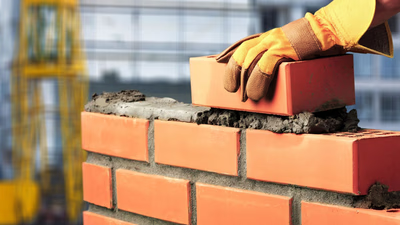
Bricks are a fundamental building material used in various construction applications, including residential and commercial structures. They provide essential structural strength, stability, and durability for load-bearing and non-load-bearing walls, pavements, and retaining walls. Their versatility allows for the creation of architectural features like arches and decorative elements, enhancing the aesthetic appeal of buildings. Bricks are also crucial in the restoration of historic structures, ensuring that renovations maintain original character. In landscaping, bricks define spaces through raised beds and garden walls while adding elegance to outdoor areas. Additionally, bricks serve as a medium for artistic expression in installations and sculptures. Despite a shift towards metal or concrete skeletons in modern multi-story buildings, bricks remain popular for facades and other applications due to their durability and thermal properties. They are particularly valued in constructing fireplaces, chimneys, industrial structures, boundary walls, and fences due to their fire resistance and insulation capabilities. The ongoing interest in brick usage reflects its importance within the construction industry.
-
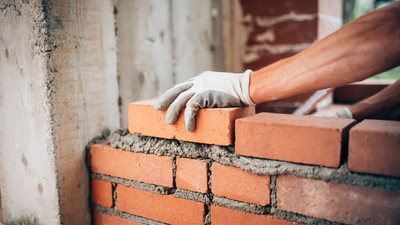
Bricks have a rich history dating back to around 7000 BC in modern-day Turkey and the Middle East. Initially made from sun-dried mud or clay, these early bricks were essential for constructing simple structures. The Mesopotamians advanced brick manufacturing techniques, introducing kiln firing to create stronger bricks, exemplified by the iconic Ishtar Gate in Babylon. Although brick usage declined during the Middle Ages, it saw a revival during the Renaissance, particularly in the Netherlands. The Industrial Revolution further transformed brick production with steam-powered machines and mechanized kilns, leading to standardized sizes and increased output. In Iran, archaeological evidence shows brick kilns dating back over 6000 years. Ancient Egyptians also utilized mud bricks extensively for their monumental constructions, including pyramids. The Romans innovated by using mortar as a bonding agent, enhancing structural stability and leading to widespread use across their empire. Today, while modern materials like concrete and steel have emerged, bricks remain popular due to their durability and aesthetic qualities.
-
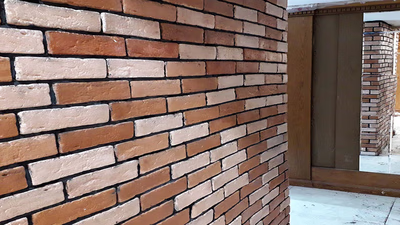
Brick is an environmentally friendly, inorganic material that excels in construction due to its moisture absorption and noise insulation properties. Its energy efficiency is notable, as refractory bricks help maintain indoor temperatures, reducing energy waste. The durability of brick ensures minimal maintenance, as it retains its aesthetic appeal over time without special care. Resistant to deformation from temperature changes and pressure, bricks are suitable for various architectural designs and can support buildings over eight stories. Their fire-resistant nature enhances safety by preventing the spread of flames and toxic gases. Additionally, bricks are versatile in design, available in various colors and styles that cater to different tastes. They can be easily recycled and reused, contributing to sustainability in construction. Overall, the combination of beauty, functionality, and longevity makes brick a preferred choice for modern building facades.






